Ford’s heavily-upgraded V8 fastback continues to be a tale of two transmissions. We spent a few weeks on board to tease out the nuances of the self-shifting pony car.
Words: Peter Anderson
Images: Blake Currall
Co-pilots: Blake Currall and Mark Dewar
It has been a long time since I actually had this Mustang and for that I apologise to everyone involved. Ford for being so generous – at the last minute no less – in handing me the keys over Christmas and New Year. Like so many of us, 2024 was A Year to Remember and not all for good reasons. The second half of the year was absolutely helter skelter, if I’m honest, and didn’t really let up until…well…this week, actually.
I will cheerfully declare myself an unlikely Mustang fan. I am not interested in Americana at all – although I contend that the Mustang transcends that label – but the rebirth of the Mustang in 2015 caught my attention. As I said last week in the Supra review, one of the reasons Mustang is transcendent is because you don’t need to put the word “Ford” before it. It’s a Mustang and Ford rides on the halo the name creates. And doesn’t mind doing that, because there haven’t been Ford badges on this car for a decade now.
Interestingly, I wasn’t a fan of that 2015 car. I drove a manual back in my Carsguide days and I came away mildly disappointed, my general disdain for Americana notwithstanding. Was that it? The slightly crappy interior, the way-too-squishy seats, the far-too-distant exhaust? What? Why? How had this happened?
It was fun, though, and so ridiculously loose on even a dry road. How the Mustang got past legal is anyone’s guess, even more so the supercharged ‘Stang I drove for the aforementioned Carsguide that I had during a particularly filthy week. The traction control light was never off.
Anyway, in 2019 I drove a Mustang I liked and I kept liking it all through its sixth generation. I drove an auto in 2021, a bright yellow abomination but once I got into the swing of what it’s supposed to be, it made sense.
The seventh-generation arrived in 2024 and while it wasn’t the huge global phenomenon of the 2015 rebirth, it was clear that things had been seen to. So a couple of weeks with a relaxed, naturally-aspirated V8 was, as I say, welcome respite.
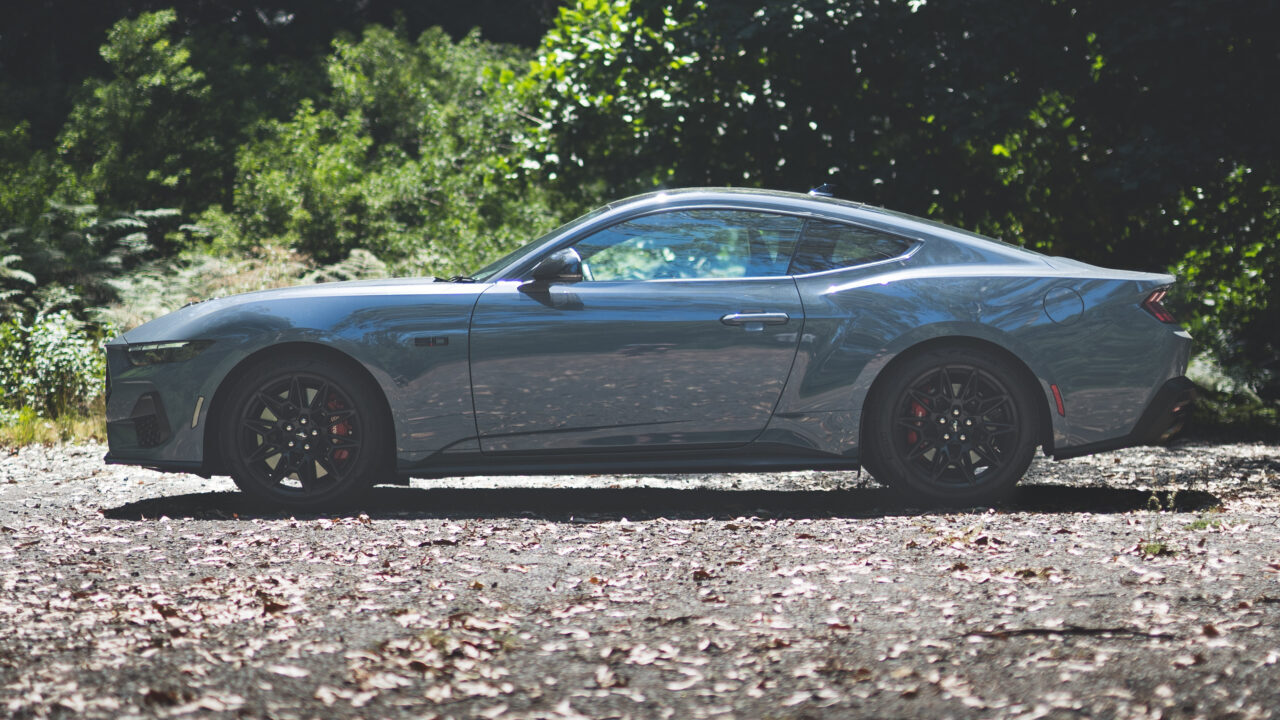
How much is a 2025 Mustang and what do I get?
- 2.3-litre Ecoboost 10-speed auto: $71,990
- 5.0-litre V8 6-speed manual: $83,990
- 5.0-litre V8 10-speed auto: $86,990
- 5.0-litre V8 10-speed auto convertible: $86,990
Mustang prices ain’t what they used to be, starting far above where they first landed in 2015. That’s to be expected, obviously, but $86,990 is an easy $35,000 more. As I’ve already mentioned, they’re a much nicer machine than those early ones, so you can wear a bit of the uptick just for that alone. There’s a lot more technology and we had some hefty inflation but you’re still looking at a decent extra whack in real terms. The fact it’s now well inside both Luxury Car Tax and NVES emission penalties thresholds explains more of the price rise.
You get a fair bit of stuff, though. You roll on 19-inch wheels, a limited slip diff, auto LED headlights with auto high beam, 12.4-inch digital dash, 13.2-inch media screen, wireless Apple CarPlay and Android Auto, sat nav, wireless phone charger, DAB digital radio, FordPass embedded SIM card, 12-speaker stereo, leather wheel, dual-zone climate control and ambient lighting.
The spec is basically the same across all versions, with the V8 also adding an extra oil cooler and Pirelli P-Zero rubber.
The Recaro seats continue as an option for $3835, with the odd mix of electrical and manual adjustment. These replace the standard seats with their heating and cooling.
You can add the Bronze Pack, too, which adds bronze wheels and a bronze pony in the grille and actually, yes, I’ll have that on the right colour car. Magneride and red Brembo brake calipers land at another $3835.
Only red and white are free, the rest of the reduced colour palette is $910. That isn’t bad for a premium colour, but you’re already paying a premium price, let’s face it.
When it comes down to it, though, this is the only V8 sports coupe left under $110,000 once you’re on the road. The supply of six-cylinder performance coupes under that price is rapidly dwindling too.
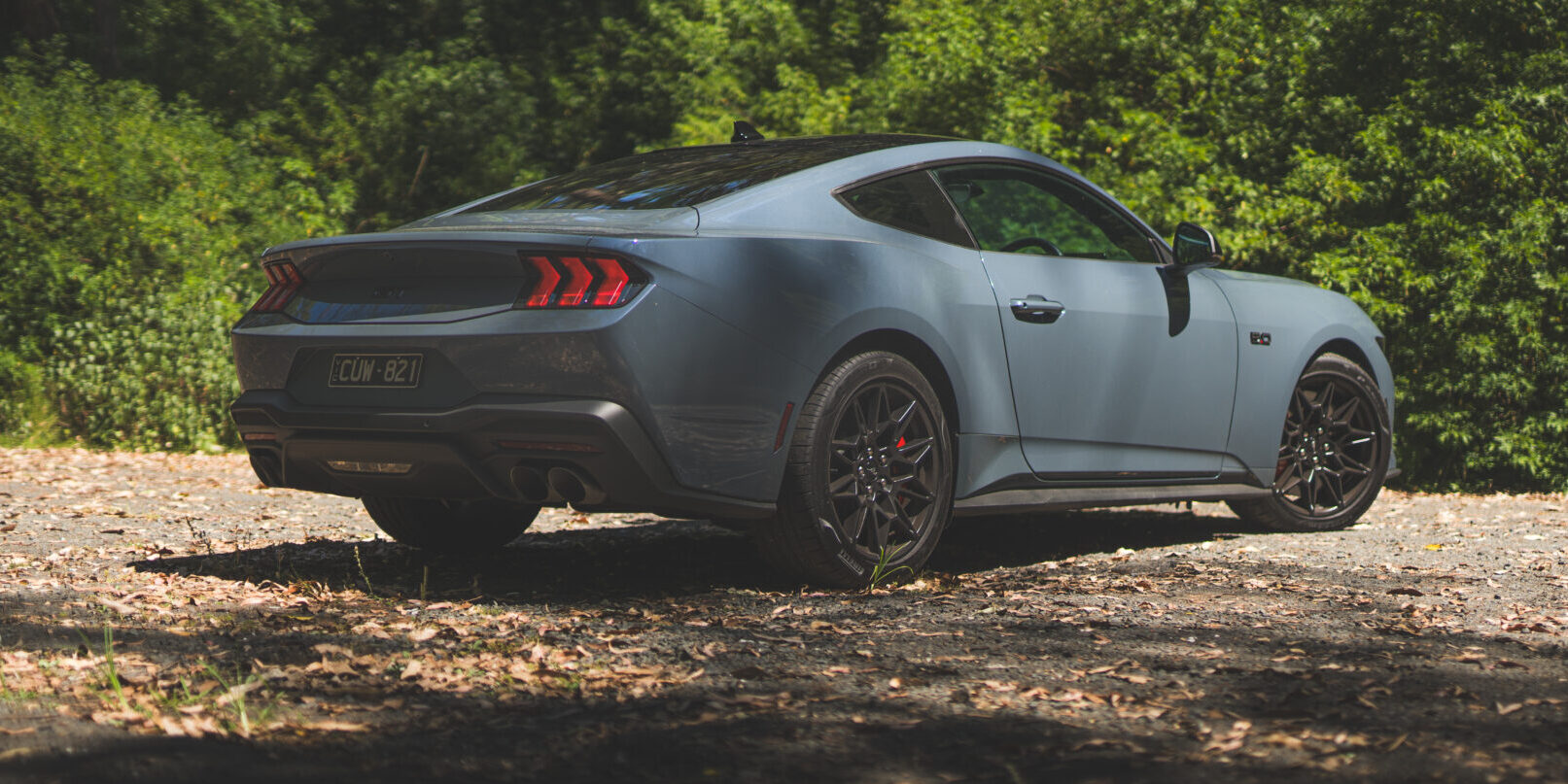
Look and Feel
Wanna know something? I think I like this better than the last one.
I like the fact it’s a tiny bit sharper and the nose is less awkward, particularly in profile. The signature haunches look superb, even in this very muted colour (which I liked). Blake and enjoyed wandering around it. I think my favourite detail are the rear lights, from just about any angle. I don’t know what it is, but they look great.
The surfacing is way less fussy, too. A look back at the car it replaced revealed creases and bulges and lines that have been banished. There’s that strong line over the rear wheels that reinforces the idea that it’s rear wheel drive and is very much a reminder of the first Mustang. Less sophisticated, in a sense, but simple.
Only the wacky, strutted grille is a bit jarring. I really do like it, it looks so long and ready to pounce.
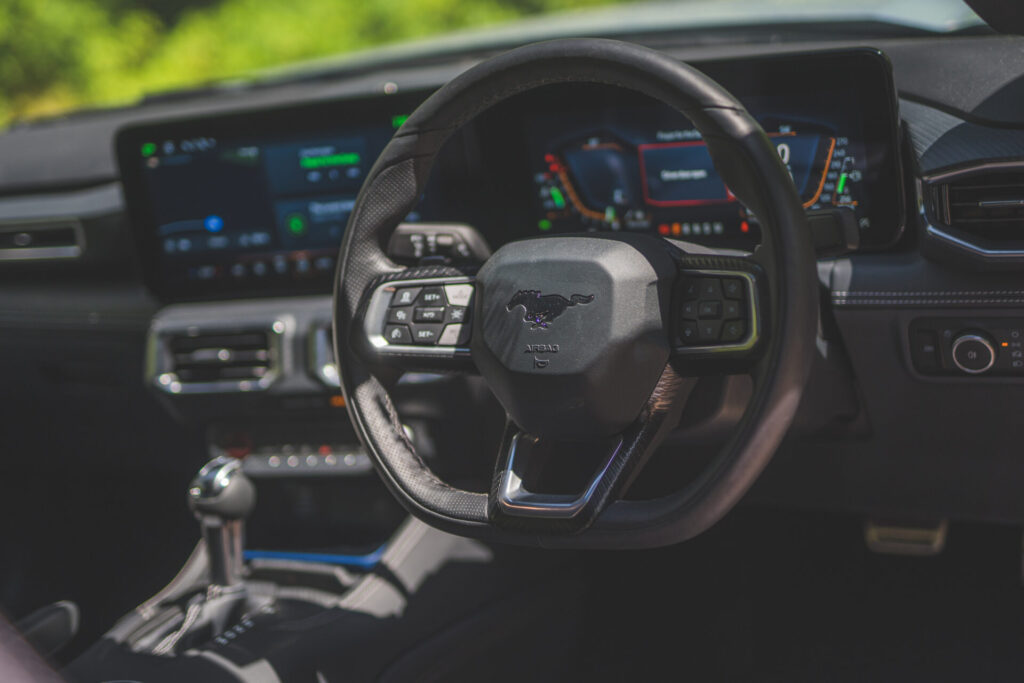
Inside is a very reasonable improvement.
The handbrake is still awkwardly placed on the “wrong” side of the transmission tunnel and that unsatisfying shifter is largely the same. But it’s way more modern and, critically, nicer.
Everything looks a lot better and the materials – most of them anyway – are better. The crap seats were binned in 2019 for Recaros and then remain, ever so comfortable and good-looking.
As you can see from the photo, there’s a Mercedes-style sweep of two big screens for dash and media system as well as a strip of physical buttons above the wireless phone charger.
You can still find some scratchy plastics, but those horrible chrome switches are gone and I don’t care if they were retro-cool, they looked and felt awful.
Drivetrain
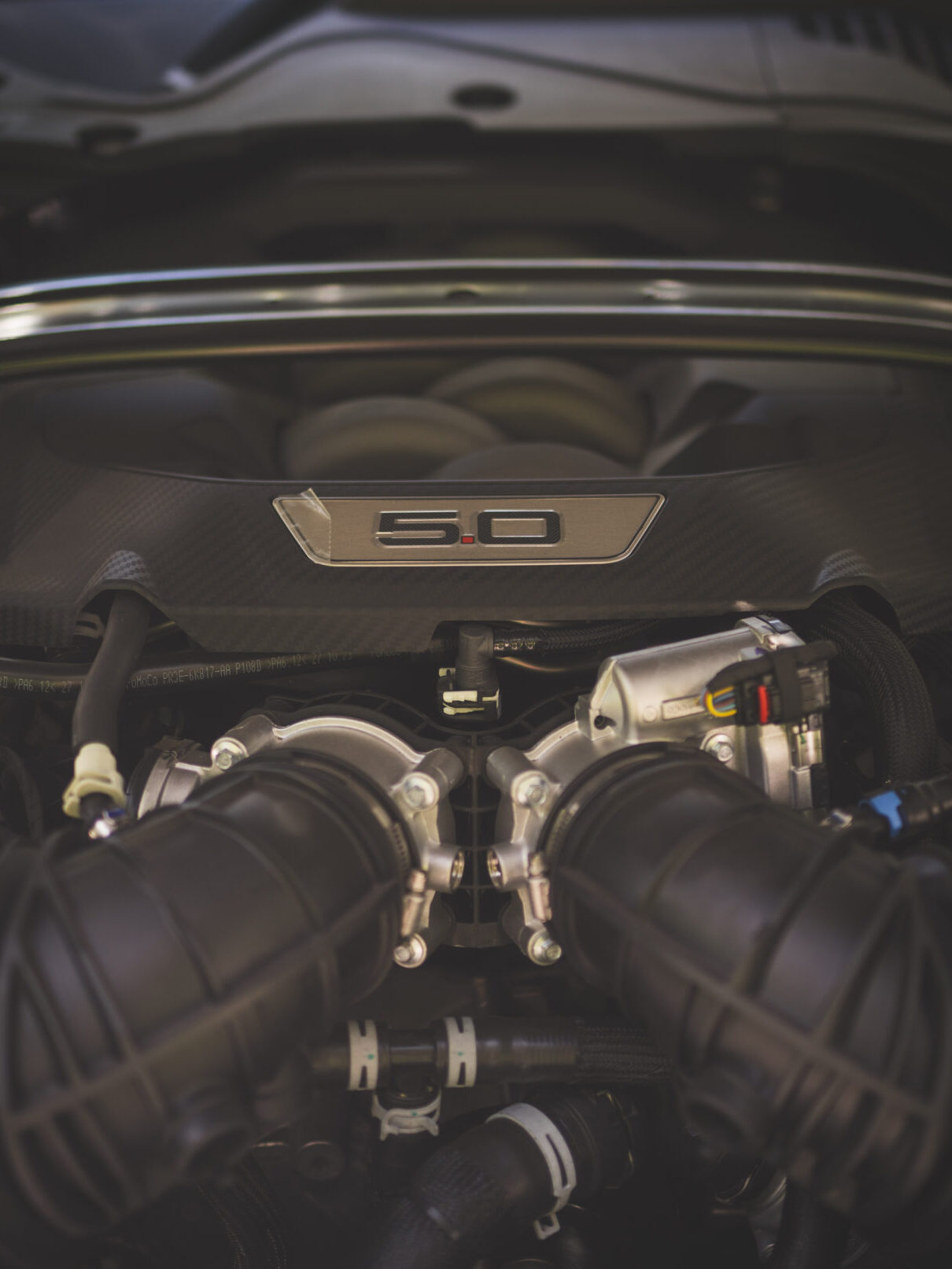
Ford’s lovely 5.0-litre V8 continues on in the Mustang, producing 345kW at 7250rpm and 550Nm of torque at 4850rpm. It’s a totally unstressed engine, with a lovely, lazy feel but without the inertia that word suggests.
Power goes to the rear wheels through a ten-speed transmission. That’s a lot of gears. The only other ten-speed I’ve driven is in the Lexus LC500 and, uh, yeah. There are some parallels.
There’s not much to say about this package because it’s very familiar, having been around for, as I keep saying, ten years. Power us up a bit and torque is down a bit over the previous car, but nothing to get too fussy about.
Chassis
As the Mustang is an evolution of the sixth-generation car, there’s not a huge amount to talk about. The optional Brembo brakes feature six-piston calipers at the front gripping 390mm discs. The four-psiton rear calipers grab 355mm rotors.
The 19-inch alloys are clothed in Pirelli P-Zeros which are pretty good tyres if a bit on the noisy side. Some previous Mustangs wore Michelin Pilot Sport 4 tyres, so that’s a small tweak.
A limited-slip differential promises some good fun times – which I can attest to having been graciously allowed to take a sixth-gen car to a skid pan – but more to the point, it’s almost mandatory given the power on offer.
Driving
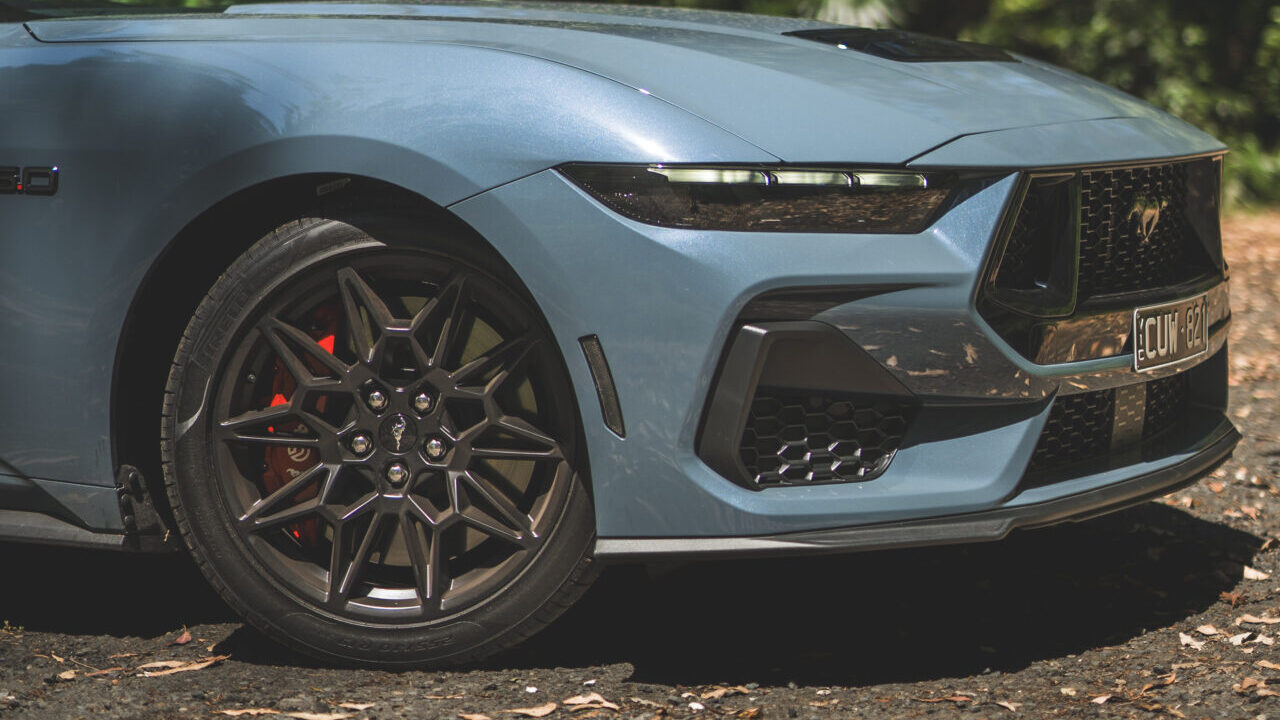
Like I said at the start, 2024 was A Year. Long, stressful, filled with drama I won’t bore you with (all of it came out in the wash and for the better, thanks for asking). But I can’t tell you what a delight it was to spend Christmas and New Year with a V8 Mustang.
Things I forget about the Mustang are legion, but I’ll go with the edited highlights. The doors are really long but the roof is relatively high, so getting in and out is easy. Not like a Supra where all of us ended up with dents in our heads. The Recaros are comfortable for all body shapes and the interior is cosy without being claustrophobic.
Well, it’s over-cosy in the back, but only a lunatic would spend time there.
The new flat-bottomed steering wheel is a bit racier than the old car’s and thank goodness too. I felt it was a little big, before, and the half-hearted dish effect (had to be, airbags and dished wheels don’t mix) meant it was a bit meh. Other than that, the feel of the car is familiar in a good way. Even the handbrake’s annoying position made me smile. I know this car.
Except the dash is all-new. The digital dials have been refreshed and are less frantic than before. You can decide how they look – including 1960s reproduction retro style or a pretty good rendition of a race dashboard, at least one from a video game. It’s pretty good.
A lot of the buttons have been swept into the central screen which is less good. I have to say, however, that even the climate controls are intuitive and easy to use and this is because the screen has a crap ton of real estate to spread out the functions. Except if you’re in CarPlay or Android Auto you have to get out of it, but still, better than most.
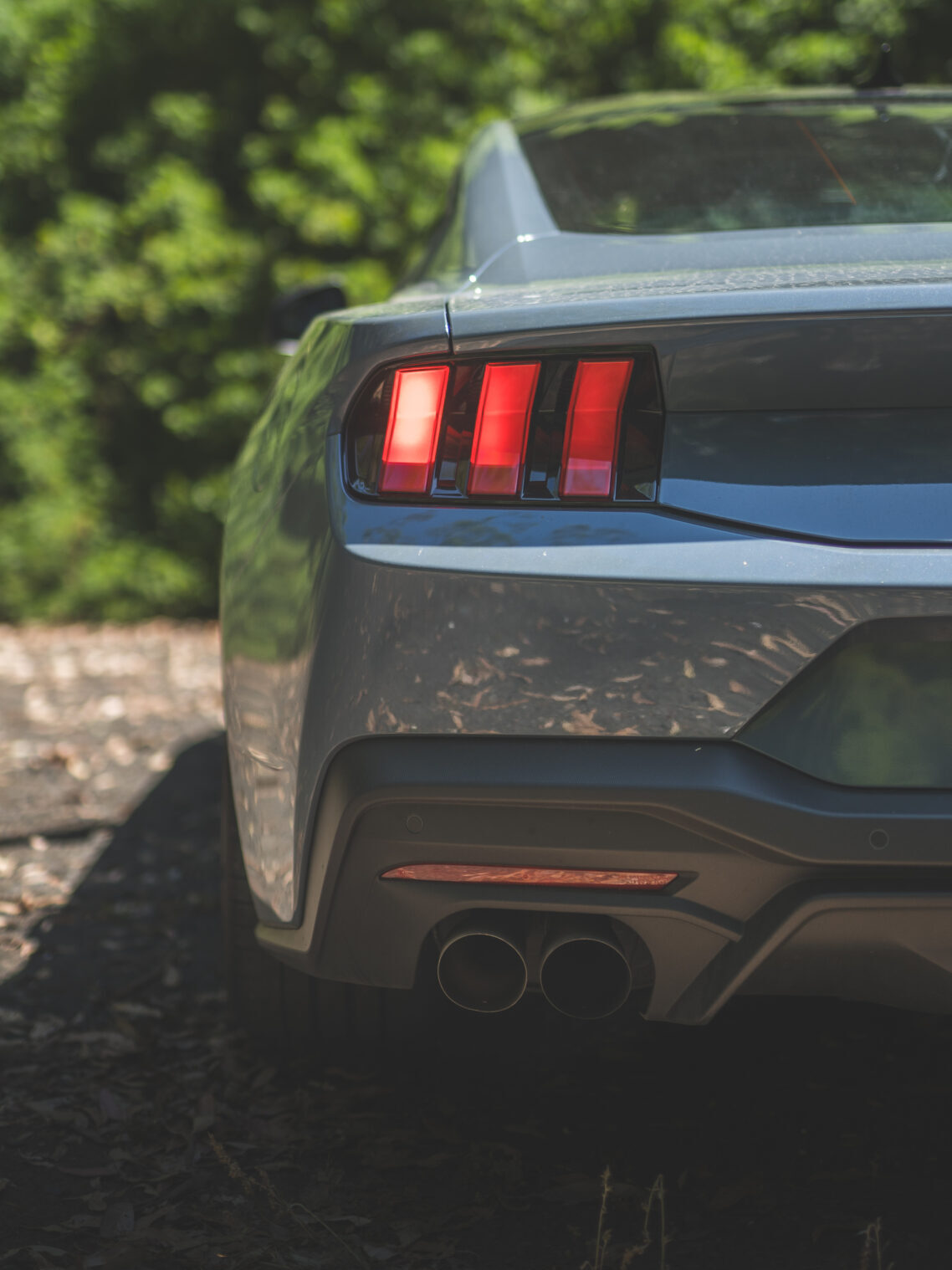
Firing up, the sound is close to perfection.
It’s not too obnoxious or loud but pleasing and appropriately menacing. I really like the setup of the active exhaust since the 2019 facelift brought the sound of the Coyote to the fore without painting you as a douchebag. If you want more, plenty of aftermarket folks will help, but Ford’s no-doubt painstaking work is excellent.
The automatic in all other ways is quite different in character to the manual. The gearing is so long and the transmission is really a tad too keen to find tenth. You’ll occasionally pull the paddles four, five or even seven times to get it down to the gear you want. It’s way better than it used to be and in normal driving, it’s so smooth you barely even know it’s there.
Work your way up the modes and things sharpen up, including the shifts, but it’s never super-convincing as a sports coupe. And that’s okay, because it’s big and heavy and not really meant to be a sharp tool. It never has and even though I’ve said it’s quite different to the manual, it’s still a Mustang. Because one of my favourite things about this rig is that it’s so delightfully loose when you crack open the throttle in anger.
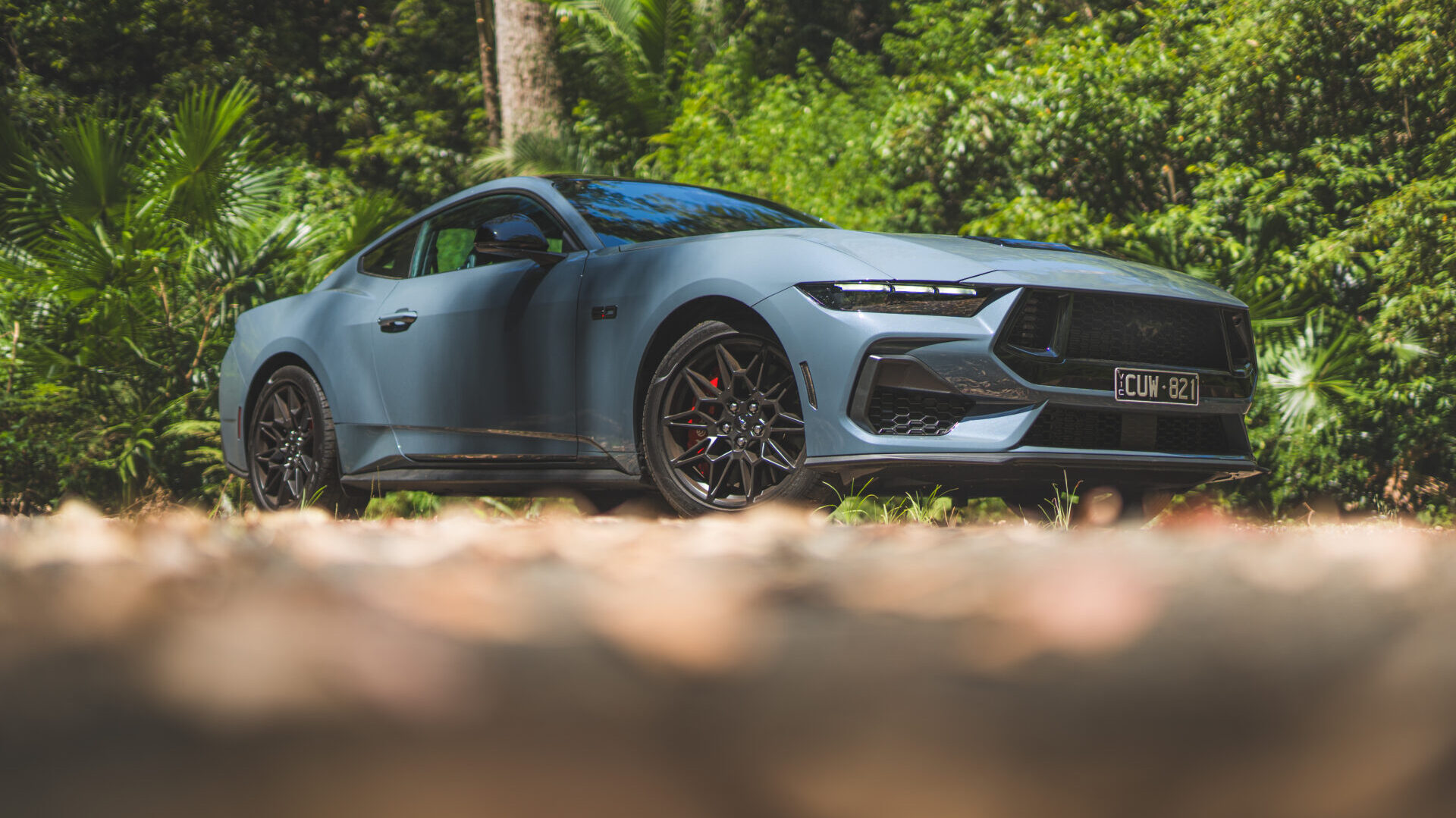
In the dry, it’s a bit of a hooligan when you boot it with more than a tiny bit of lock, although it doesn’t get lurid. It sounds great and I love the way the engine revs cleanly to its peak power. It’s just lovely.
The steering is nicely weighted, too, with the kind of gearing that will keep you out of trouble both on road and track. There isn’t a lot of life in it though, Blake declaring “as lifeless as a fish on a sun lounger.” Quite.
When you’re pressing on the Brembo brakes are really excellent and I reckon paired with the Magneride well worth the money. The brakes can take a bit of a hammering (and they did on various mountain passes) and the feel is terrific.
All the time, too, the Mustang remains composed on its springs and dampers, whether you’re cruising gently or shredding the P-Zeros. Blake was a lot more complimentary of the suspension, going so far as to call it great. I agree.
Redline Recommendation
I do like the Mustang very much. The automatic was the right car for me at the right time, and if you want a super-solid cruiser that will do literally any number of miles comfortable and fuss-free, it’s terrific.
You can have some fun and it will drift very enthusiastically on a skid pan and you can then drive it home in air-conditioned comfort with some calming Enya on the stereo. It’s good like that – a comfortable companion with a great sense of humour.
Regular co-pilot Mark was a big fan of the sound and, as ever, less than complimentary of the Moon Dust Metallic paint. It didn’t dampen his enthusiasm for the driving experience, though. While we were all impressed at the much-improved ten speed, we’re all united on the manual being the one to go for.
It’s just the right thing to do.
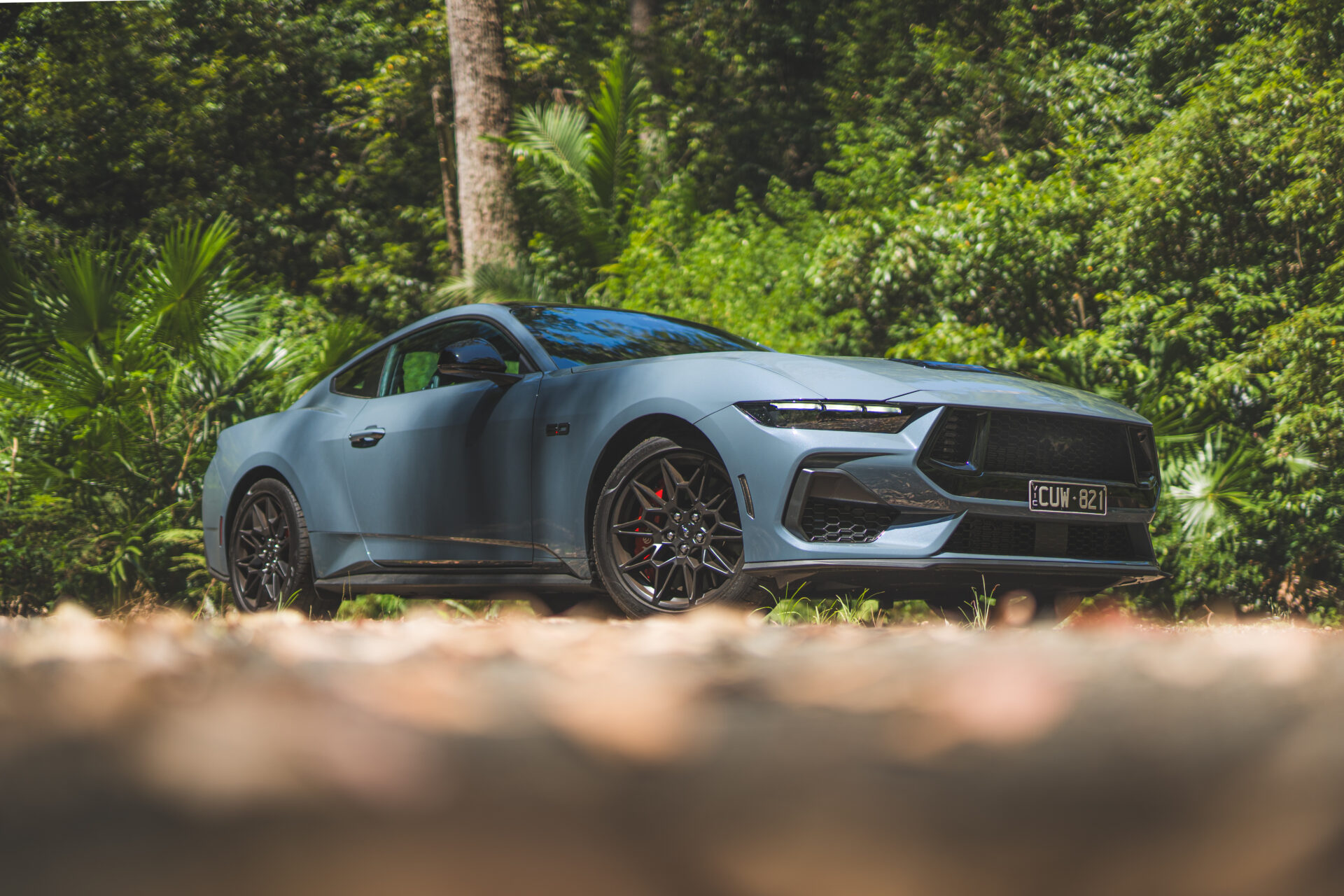
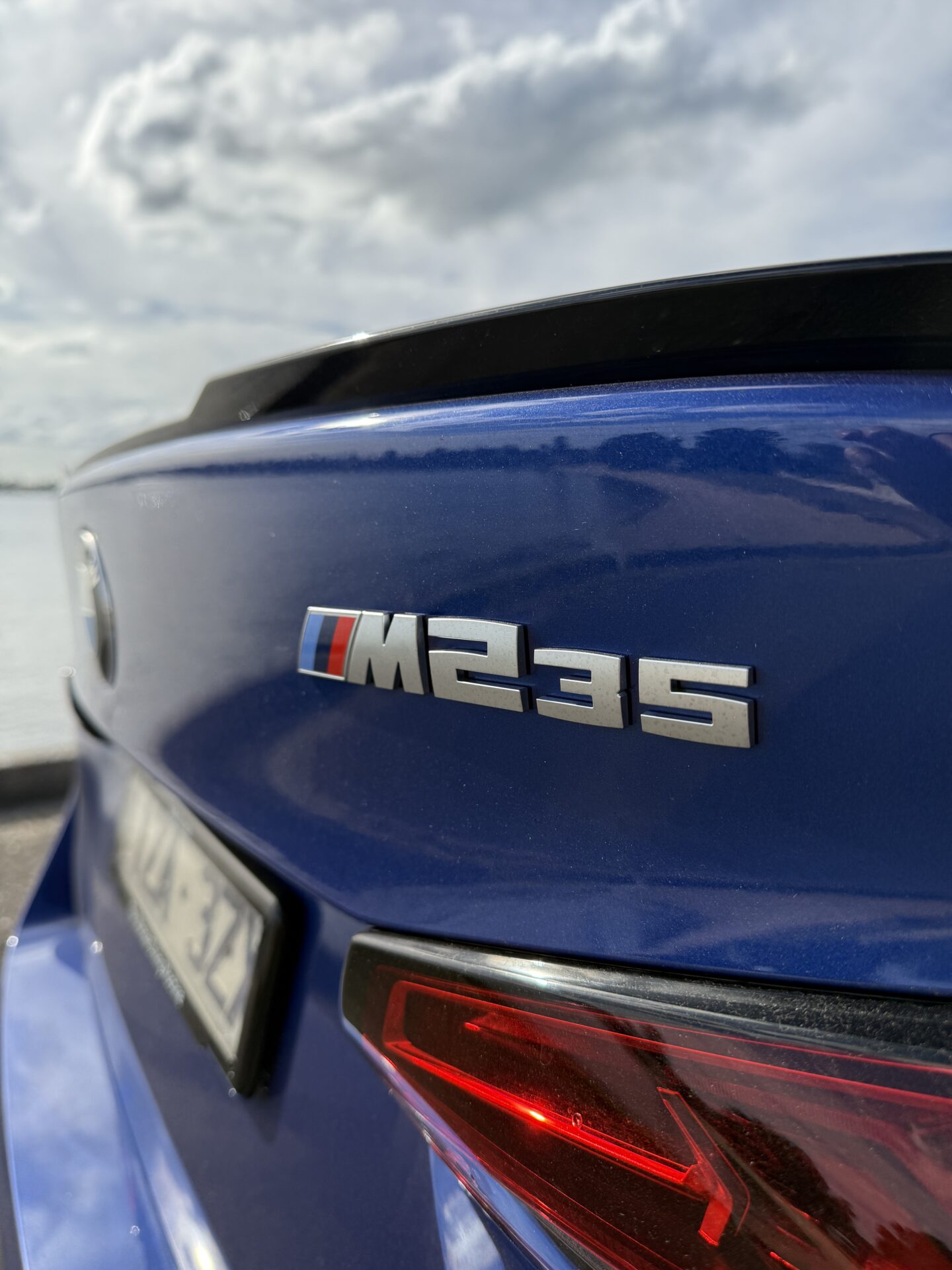
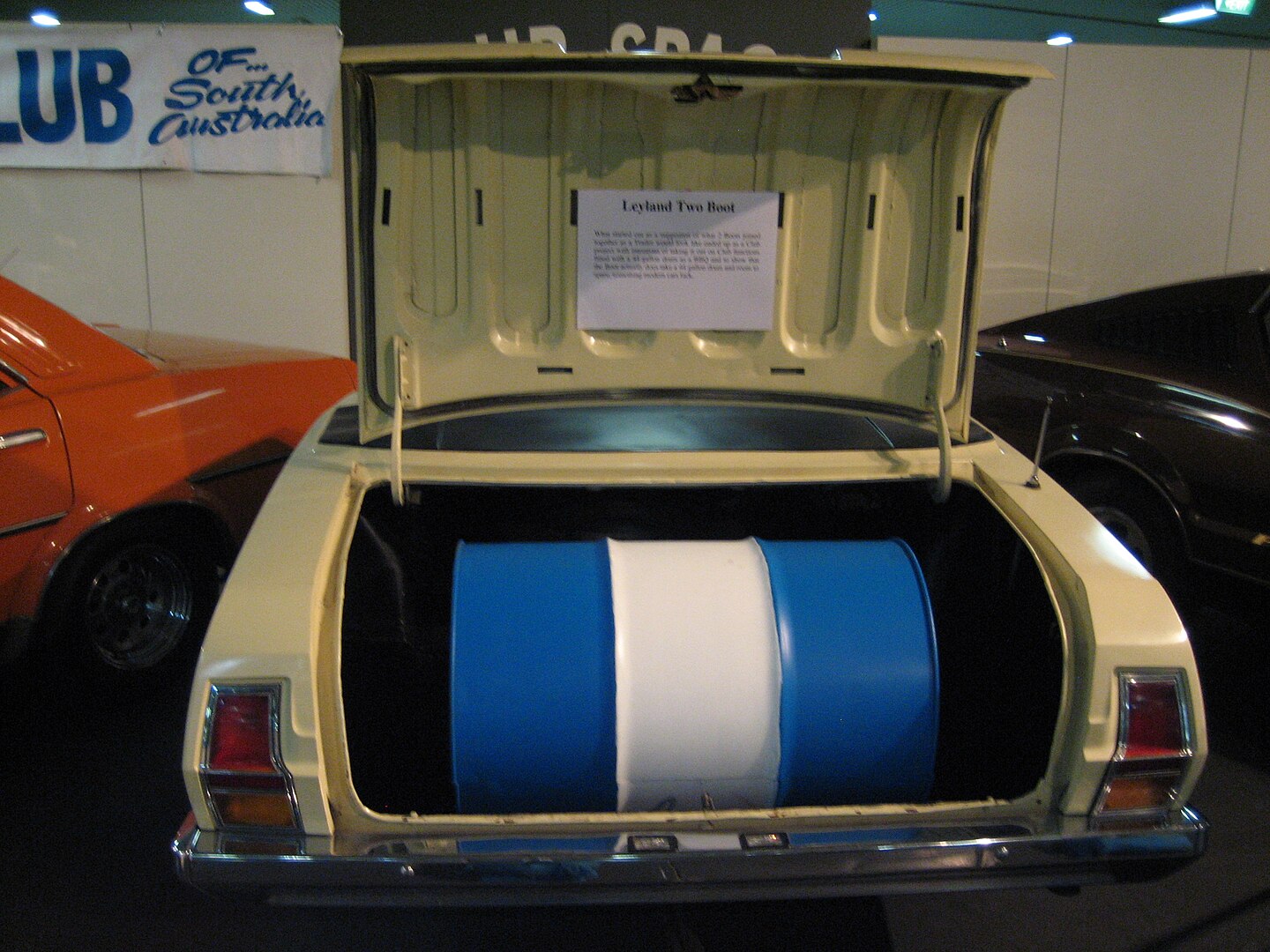
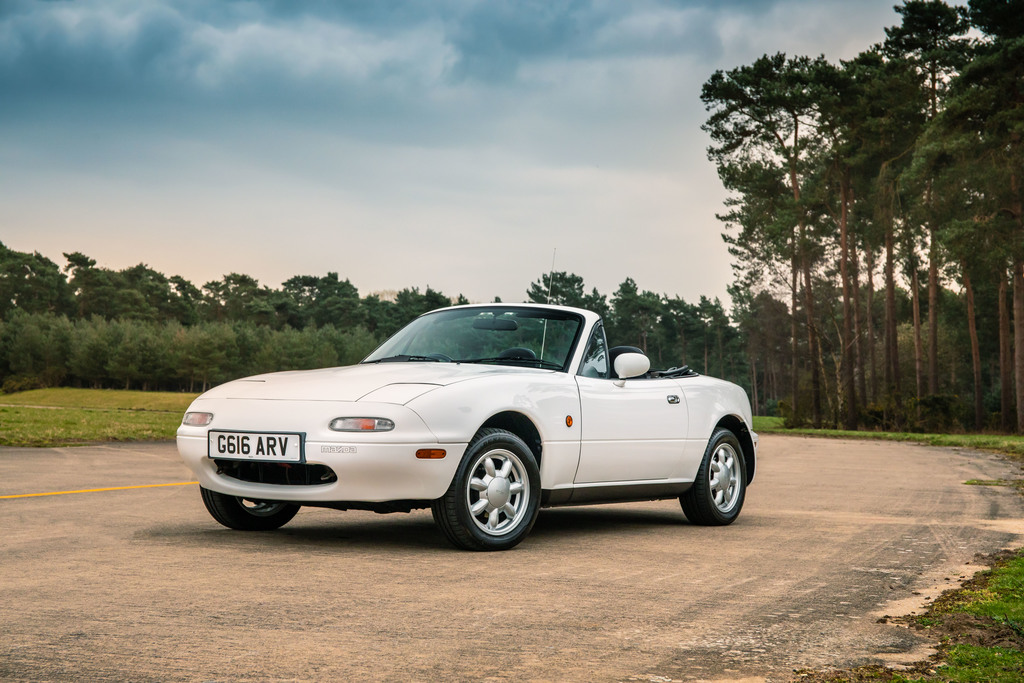

Leave a Reply